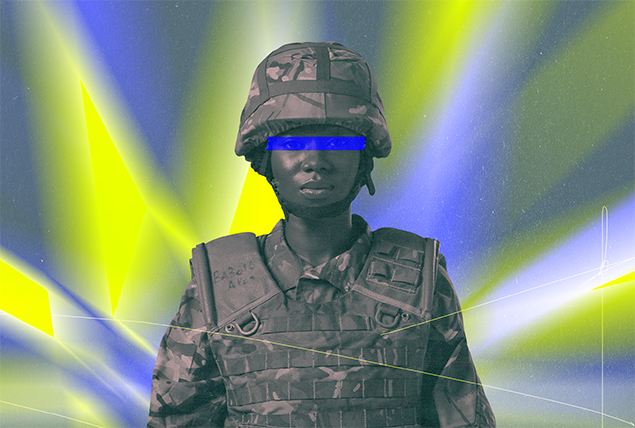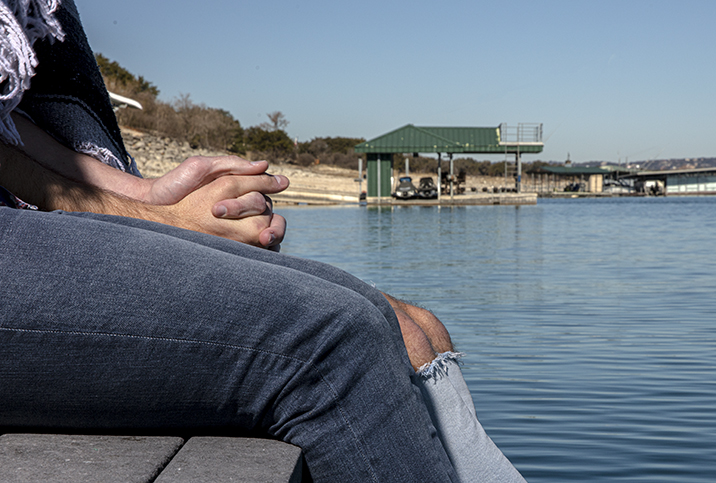New Intensive Therapies Available to Treat Combat PTSD

Trauma is not exclusive to people in high-risk occupations, such as soldiers, police officers and firefighters. Men and women in abusive relationships experience it. Children who are abused can feel trauma's effects for decades. Accident victims, too, are subject to life-altering trauma.
Even so, exposure to trauma is more prevalent among military service members compared to civilians. It’s estimated that 7 percent of people in the armed forces will experience post-traumatic stress disorder (PTSD) at some point. Better ways to treat PTSD are always in the works.
In a recent study conducted with military personnel and veterans at four locations in Texas from 2017 to 2019, two types of intensive prolonged exposure therapy showed promise as new and effective PTSD treatments for military personnel and veterans with combat experience.
How do you get PTSD?
Post-traumatic stress disorder is a mental health condition that can develop in some individuals who have experienced or witnessed a traumatic event. Traumatic events can include situations such as natural disasters, serious accidents, physical or sexual assault, military combat or any other life-threatening experience.
People with PTSD may experience four main categories of symptoms.
1. Re-experiencing symptoms
This involves reliving the traumatic event through distressing memories, nightmares or flashbacks. These intrusive thoughts can be triggered by reminders of the event and individuals may feel as if they are reliving the traumatic experience.
2. Avoidance symptoms
A common symptom of PTSD is to try to avoid anything that's a reminder of the details of the event that caused the trauma. This can include avoiding certain places, people or activities that may trigger distressing memories. There also may be an effort to suppress thoughts or feelings related to the event.
3. Cognition and mood symptoms
Individuals with PTSD may experience:
- A lack of positive emotions or difficulty maintaining interest in activities they previously enjoyed
- Distorted thoughts about themselves, others or the world, leading to feelings of detachment, estrangement or a diminished sense of the future
- Negative emotions such as fear, guilt, shame or anger
4. Hyperarousal and reactivity symptoms
People with PTSD often experience one or more of the following symptoms:
- Being easily startled or having an exaggerated startle response (a mostly subconscious defensive response to something sudden or threatening)
- Being hypervigilant, constantly on guard, and having an exaggerated response to potential threats
- Difficulty sleeping
- Irritability, aggression or trouble concentrating
- Heightened levels of anxiety and arousal
It's important to note that not everyone who experiences a traumatic event will develop post-traumatic stress syndrome. Various factors, such as the severity of the trauma, the availability of support systems and pre-existing mental health conditions can influence the disorder's development.
Being diagnosed with PTSD
To be diagnosed with PTSD, an adult must have exposure to significant trauma as well as all of the following symptoms for at least one month:
- At least one re-experiencing symptom
- At least one avoidance symptom
- At least two cognition and mood symptoms
- At least two hyperarousal and reactivity symptoms
If you're experiencing symptoms of PTSD, it's essential to seek professional advice. Mental health professionals can provide appropriate diagnosis, therapy and support to help individuals manage and overcome the effects of PTSD.
What is prolonged exposure therapy?
When you experience a traumatic event and retrieve a memory of that event, it may be disturbing or upsetting. Your mind knows, though, it's not happening to you in the moment, explained Nicholas Barr, Ph.D., an assistant professor of social work at the University of Nevada-Las Vegas.
It's unpleasant, but your body knows you're not going through that dangerous experience again.
With PTSD, however, the traumatic memory keeps activating the body's fear response as if the danger were still happening. That can be disturbing if you're reliving a memory or you're unexpectedly reminded of it. It can be destabilizing and you might feel like you're under immediate threat again.
Prolonged exposure (PE) therapies aim to create a safe environment in sessions—their parameters are discussed below—and allow a person to confront and process the traumatic memory. The goal is to help them refile the memory appropriately and reduce the distressing reactions it triggers.
Alan L. Peterson, Ph.D., the director of the Consortium to Alleviate PTSD in the department of psychiatry and behavioral sciences at the University of Texas Health Science Center at San Antonio, is the lead researcher of the study previously mentioned study.
In the study, Massed vs. Intensive Outpatient Prolonged Exposure for Combat-Related Posttraumatic Stress Disorder, published in January 2023 on the JAMA Network, Peterson explained that PE therapy includes two primary components: imaginal exposure and in-vivo exposure.
Imaginal exposure
This includes discussing the specific details of the primary traumatic event. It requires a first-person narrative description by the patient of precisely what happened, using as many details as possible.
Imaginal exposure starts during the third PE session, is repeated through the last session, and is followed by emotional processing of the details of the traumatic event after each exercise. Every time the event is reviewed, additional details are usually uncovered by the patient, and they become accustomed to the memory. They're able to emotionally process the details of the trauma and become progressively less distressed by it.
In-vivo exposure
In this component of PE therapy, patients approach situations in their environment that they have been avoiding because they are trauma reminders or they are perceived as dangerous.
If they approach these situations and remain there for about 45 minutes, their distress reactions either start to diminish or they get used to the memory as there's now no true danger in these situations.
This allows them to gradually resume valued live activities they may have avoided since the trauma.
"A time-limited, intensive focus on the details of their combat-related PTSD through PE therapy may help people get past their combat-induced PTSD," Peterson noted.
Prolonged exposure therapy is considered one of the most effective types of treatment for PTSD.
"There is a substantial amount of research evidence supporting the effectiveness of PE and similar exposure-based methods," Barr said.
What were the study's findings about PE therapy?
The randomized clinical trial, Peterson explained, included 234 military personnel and veterans who were treated with two different types of PE therapy:
- Massed prolonged exposure (M-PE) consisted of three weeks of daily 90-minute PE sessions.
- Intensive outpatient prolonged exposure (IOP-PE) consisted of three weeks of daily 90-minute PE sessions, plus eight treatment enhancements targeted on the unique aspects of combat-related PTSD in active-duty military personnel.
"Both massed-PE and IOP-PE resulted in very large reductions in PTSD symptoms, some of the largest reduction found in a PTSD clinical trial to date of post-9/11 service members and veterans," Peterson said.
IOP-PE resulted in greater maintenance of any treatment gains, he added.
Overall, both therapies resulted in significant reductions in PTSD symptoms, as reported by clinicians and the individuals taking part in the study. These changes were not only statistically significant but had meaningful clinical implications.
These findings strongly support the effectiveness of these treatments for combat-related PTSD.
Who's eligible for prolonged exposure therapy?
"These intensive treatments are best for individuals who have not responded to previous PTSD treatments," Peterson explained.
The U.S. Department of Veterans Affairs (VA) provides healthcare to those who served on active duty in any uniformed service and didn't receive a dishonorable discharge.
"Veterans receiving healthcare through the VA are entitled to PE therapy," Barr noted, "but depending on what state or city they're in, there may be more or less treatment availability."
It can take a long time for veterans to get access to this type of treatment in some areas, but Peterson said similar treatments are currently available on the Warrior Care Network.
The Wounded Warrior Project (WWP) has partnered with four academic medical centers to provide a path to wellness for service members and veterans experiencing PTSD and other related conditions:
- Emory Healthcare, Atlanta
- Massachusetts General Hospital, Boston
- Rush University Medical Center, Chicago
- The University of California Los Angeles (UCLA).
The massed-PE protocol is also being rolled out across the VA's PTSD Clinical Teams (PCTs).
What should you know about undergoing PE?
If you're considering PE therapy, Barr said, ensure you find a therapist who is certified and experienced in this type of treatment.
"It's very important to do as much research upfront as you can to find a clinician who you connect with and trust, who's trained in the intervention and then see it through," he explained, adding that dropping out of therapy may cause the opposite effect of what you're trying to achieve.
"Recovering from combat-related PTSD is hard work, much like what is required to graduate from basic military training," Peterson said.
However, he noted that most service members and veterans embrace this intensive treatment approach and prefer it to most standard treatments that often take three to four months to complete.
"In reality, about 50 percent of patients drop out of standard treatment approaches before they receive a full dose of therapy," he said.
This can leave individuals feeling like their only viable option is to accept combat-related PTSD as a chronic disorder that will be very difficult to live with long-term.
"Nothing could be further from the truth," Peterson said.


















